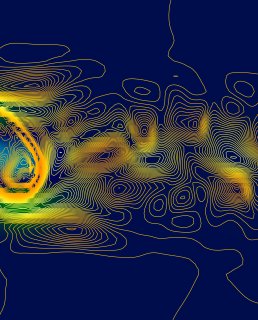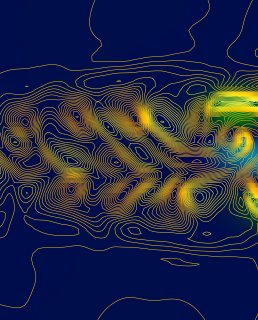
First Place, 2021
Immunohistochemistry imaging of a human cerebellum, with antibodies specific for Calbindin (green) and poly-ADP-ribosylation (PAR, red), as well as DNA (blue, stained with DAPI). The molecular, granule, and Purkinje cell layers of the cerebellum can be seen in this tissue slice from our study of patients with Ataxia-Telangiectasia (A-T), an early childhood onset neurodegenerative disorder that is specific to the cerebellum. The green cell in the center is a Purkinje neuron, a cell that integrates thousands of impulses from granule cells (seen in red here) to control movement and coordination in humans. In this study (Lee, et al., Molecular Cell 2021) we investigated the role of poly-ADP-ribosylation in A-T and found that higher levels of PAR occur in A-T patients.
The image was taken by Oshadi Wimalarathne with assistance from Collene Jeter (UT MD Anderson Cancer Center), using formalin-fixed autopsy tissue obtained from the NIH Neurobiobank, prepared by Nicolette Ender. This work was done as part of a project on cerebellar neurodegeneration in Dr. Tanya Paull’s laboratory in the Department of Molecular Biosciences.
Preparation of the sample was done on the UT Austin main campus, with imaging at MD Anderson, Smithville, in the Flow Cytometry and Cellular Imaging core, using a multispectral laser scanning confocal microscope (Zeiss LSM880) and the 20X (0.8 NA) Plan/Apo objective with a pinhole aperture of 1-1.5 AU.
Credit:
Dr. Tanya Paull
Professor, Department of Molecular Biosciences
Oshadi Wimalarathne
Research Scientist Assistant, Department of Molecular Biosciences
Nicolette Ender
Laboratory Manager/Research Technician, Department of Molecular Biosciences
With assistance from:
Dr. Collene Jeter
Research Assistant Professor, UT MD Anderson Cancer Center




